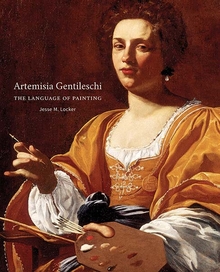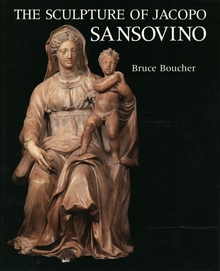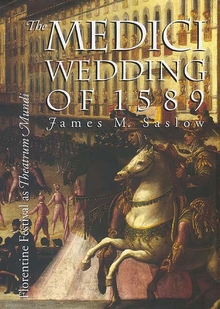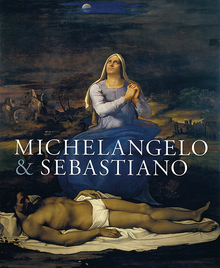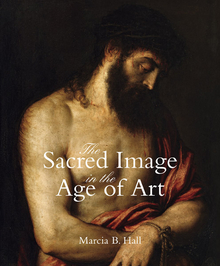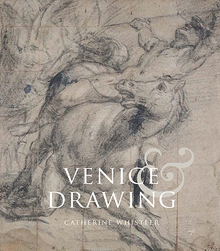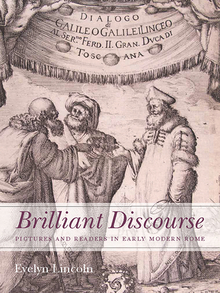Artemisia Gentileschi
WARNING
You are viewing an older version of the Yalebooks website. Please visit out new website with more updated information and a better user experience: https://www.yalebooks.com
The Language of Painting
Jesse Locker

Read this book online via the A&AePortal, our art and architectural history eBook platform. To learn more about how to access this book, please contact us.
An important reassessment of the later career and life of a beloved baroque artist
Hailed as one of the most influential and expressive painters of the seventeenth century, Artemisia Gentileschi (1593–ca. 1656) has figured prominently in the art historical discourse of the past two decades. This attention to Artemisia, after many years of scholarly neglect, is partially due to interest in the dramatic details of her early life, including the widely publicized rape trial of her painting tutor, Agostino Tassi, and her admission to Florence’s esteemed Accademia del Disegno. While the artist’s early paintings have been extensively discussed, her later work has been largely dismissed.
This beautifully illustrated and elegantly written book provides a revolutionary look at Artemisia’s later career, refuting longstanding assumptions about the artist. The fact that she was semi-illiterate has erroneously led scholars to assume a lack of literary and cultural education on her part. Stressing the importance of orality in Baroque culture and in Artemisia’s paintings, Locker argues for her important place in the cultural dialogue of the seventeenth century.
Hailed as one of the most influential and expressive painters of the seventeenth century, Artemisia Gentileschi (1593–ca. 1656) has figured prominently in the art historical discourse of the past two decades. This attention to Artemisia, after many years of scholarly neglect, is partially due to interest in the dramatic details of her early life, including the widely publicized rape trial of her painting tutor, Agostino Tassi, and her admission to Florence’s esteemed Accademia del Disegno. While the artist’s early paintings have been extensively discussed, her later work has been largely dismissed.
This beautifully illustrated and elegantly written book provides a revolutionary look at Artemisia’s later career, refuting longstanding assumptions about the artist. The fact that she was semi-illiterate has erroneously led scholars to assume a lack of literary and cultural education on her part. Stressing the importance of orality in Baroque culture and in Artemisia’s paintings, Locker argues for her important place in the cultural dialogue of the seventeenth century.
Jesse Locker is associate professor of Italian Renaissance and Baroque art at Portland State University.
“In the past 100 years, Artemisia Gentileschi has become one of the most recognizable painters from the 17th century, male or female. Her Caravaggio-inspired paintings—full of blood, dramatic violence, and striking uses of shadow and light—are massive draws in the museums that hold them. . . . Yet audiences and critics alike usually find themselves dumbfounded and let down by the paintings made in the last decades of her career, when she was at the height of her fame and influence. . . . Locker’s book provides a much-needed answer to the disparity in the feminist icon’s work—to the question of what happened to Artemisia’s painting style, and why.”—William O’Connor, The Daily Beast
“In this beautifully illustrated study . . . Locker sheds new light on [Gentileschi]. . . . His study significantly deepens understanding of this fascinating artist and is an important contribution to the field.”—Choice
“In Artemisia Gentileschi, [the artist is revealed as a] thoughtful artist in dialogue with her contemporaries, less a product of her biography than a fully engaged mind. It’s a compelling argument for re-examining her later works.”—Johns Hopkins Magazine
“A welcome and thought-provoking addition to an understanding of [Artemisia Gentileschi’s] work and of the intertwined literary and visual cultures of early modern Italy.”—Karen J. Lloyd, CAA Reviews
“Locker’s book provides precious insight into Artemisia’s ties to seventeenth-century academic culture, into the breadth of literary admiration for her work, and into her intellectual and artistic milieu.”—Frances Gage, Renaissance Quarterly
“A valuable, beautifully illustrated, and intriguing study. . . . Locker adds much to our knowledge of Gentileschi’s reputation during her lifetime.”—Marjorie Och, Woman’s Art Journal
“Locker adds much to our knowledge of Gentileschi’s reputation during her lifetime. . . . Future work on Artemisia Gentileschi will benefit from Locker ’s discoveries and thoughtful interpretations.”—Marjorie Och, Woman’s Art Journal
“[Artemisia Gentileschi] clearly demonstrates how a more nuanced approach to this woman artist is now possible. . . . [T]his beautifully produced book makes a substantial contribution to several fields.”—Sheila Ffolliott, Early Modern Women Journal
Winner of the 2016 Helen and Howard R. Marraro Prize given by the Society for Italian Historical Studies.
ISBN: 9780300259056
Publication Date: January 19, 2021
Publication Date: January 19, 2021
248 pages, 8 x 10
99 color + 17 b/w illus.
99 color + 17 b/w illus.

